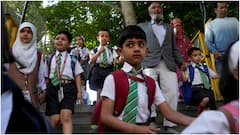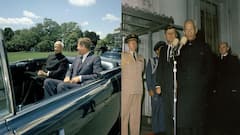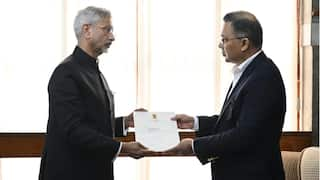Reading Vs Audiobooks: 7 Expert Tips To Choose The Best Way To Learn
Discover 7 expert tips to decide whether reading or audiobooks is the best way for you to learn and absorb knowledge effectively.

By Preeti Sharma
Paul Freire, the author of the book titled “Literacy: Reading the Word and the World” has written extensively about reading and the impact of a child’s environment on his learning. Lawyer, psychologist and philosopher, Freire was the director of the Adult Literacy program in Brazil and a great advocate of reading. In an article titled “The importance of the act of reading”, Frier talks extensively about the ‘Culture of Silence’ that is increasingly emerging in the face of marketing forces and the negative impact of technology that renders people powerful and voiceless.
The article is a must-read for anyone involved with education, and serious about building readers. Freire states, “Reading does not merely consist of decoding the written word rather it is preceded by and intertwined with the knowledge of the world. The understanding attained by critical reading of a text implies perceiving the relationship between text and context.”
He draws upon childhood experiences and interactions that built his early reading foundations.
In this hauntingly beautiful article, he writes, “I see myself then in the average house in Recife, Brazil, where I was born, encircled by trees. Some of the trees were like persons to me, such was the intimacy between us. In their shadow, I played, and in those branches low enough for me to reach I experienced the small risks that prepared me for greater risks and adventures. The old house—its bedrooms, hall, attic, terrace, backyard—was my first world. In this world, I crawled, gurgled, stood up, took my first steps, and said my first words. Truly, that special world presented itself to me as the arena of my perceptual activity and therefore, as the world of my first reading. The texts, the words, and the letters of that context were incarnated in a series of things, objects, and signs. In perceiving these, I experienced myself, and the more I experienced myself, the more my perceptual capacity increased. I learned to understand things, objects, and signs through using them in relationship to my older brothers and sisters and my parents…..the green of a mango when the fruit is first forming, the green of mango fully formed, the greenish-yellow of the same mango ripening, the black spots of an overripe mango—the relationship among these colours, the developing fruit, its resistance to our manipulation, and its taste. It was possibly at this time, by doing it myself and seeing others do it, that I learned the meaning of the verb to squash.”
There are two major takeaways from this article – that before one learns to read the word, one “reads” the world, and that understanding is built through relationships and social interactions.
The human brain is wired hard-wired to decode symbols. When a child reads, the text transforms itself into images running through the brain like a movie. He constructs his characters and creates cities, forests, forts and dungeons, or wherever else the story may be occurring. A marching army, the whiff of a summer breeze or sweet perfume, or, to borrow from Frier, the burst of sweetness of a ripe mango.
We read for two purposes, to entertain ourselves or to acquire knowledge. If you are seeking entertainment, go ahead and listen to an audiobook. But beware - the imagination is compromised in the way the audio is rendered, the rise and pitch of the narrator’s voice may not match the emotion the reader might feel, or inaccurately describe the colour of his character’s hair. The accent may hinder comprehension, a fact overlooked by most educational content creators. Or the listener may find his attention wandering because focus can be fickle.
In today’s world, when podcasters have become minor celebrities, I find the comfort of snuggling up with a good book an unmatched experience, turning the pages and running my fingers over the juicy parts. Some of my students highlight or draw hearts around lines that appeal to them. Audiobooks deprive them of that pleasure.
If I were to prescribe 7 tips to build readers, here is what I would recommend.
- Introduce picture books early. Picture books are a gateway to reading. Bright colours and illustrations build focus and the capacity of simply sitting with a book.
- Reading before bedtime. This one wins hands down when it comes to reading. As soon as the child is ready to be seated on the mother’s lap, reading before bedtime builds not only the skill but also the precious bond between parent and child.
- Making books accessible - How are books displayed, stored and cared for? Picture books must always be displayed with the front cover visible. There’s enough research to show that children are likely to pick a book if the cover is visible.
- Book Clubs. While books can build a community of readers, they also help introverts open up. This was a revelation for me as a teacher when I found the most tongue-tiedstudents talk fervently about their favourite read.
- Classroom Libraries. Donalyn Miller, author of “The Book Whisperer,” swears by classroom Libraries. Known for her unconventional way of teaching by totally doing away with comprehension sheets worksheets and drills, this grade sixth-grade teacher from Texas had her students achieve the highest score in standardised tests because all she did was focus on reading. Her classroom looked more like a library than a classroom, piled high as it was with books stacked from ceiling to floor.
- Teachers as readers – Give time and space for teachers to read. Setting aside one period a week for teachers to visit the Library can be a game changer.
- The Liberated Librarian– Allow Librarians the luxury to read, curate, share and celebrate books by not piling them up with the administrative aspects of running a Library.
Learning involves the heart and not the mind. It’s all about building a connection with students and placing a physical book in their hands. These books will be cherished and read over and over, because they are concrete, living, breathing objects, with shape and form, not some vacuous MP3 download floating around on your desktop or, worse, stored on the Cloud and doomed into oblivion.
(The Author is the Resource & Research Facilitator at Shiv Nadar School, Chennai)
[Disclaimer: The opinions, beliefs, and views expressed by the various authors and forum participants on this website are personal and do not reflect the opinions, beliefs, and views of ABP News Network Pvt Ltd.]
Education Loan Information:
Calculate Education Loan EMI
Related Video
Delhi Election Results 2025: Counting Begins; BJP Poised for Historic Comeback in Delhi, Exit Polls Suggest | ABP News





































